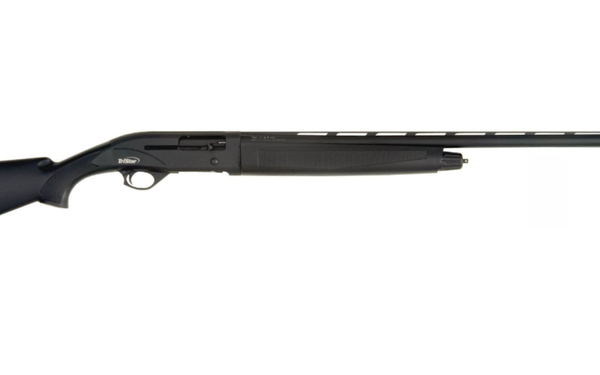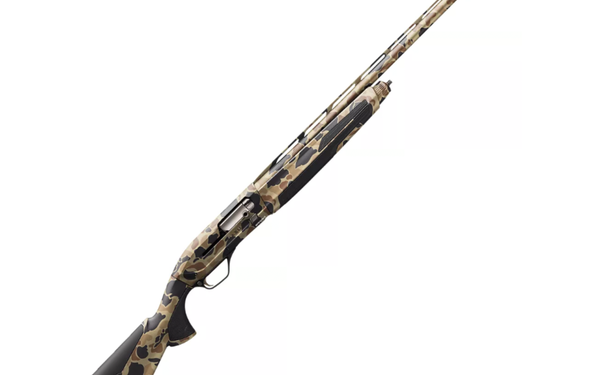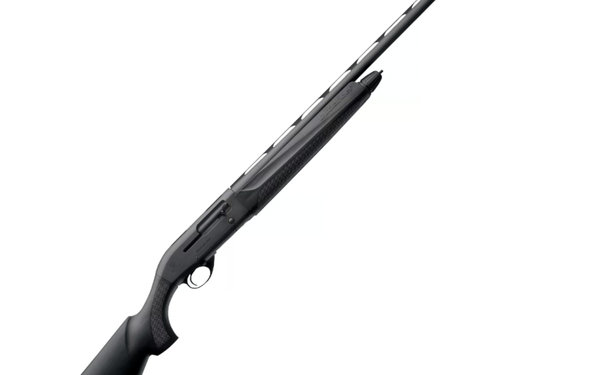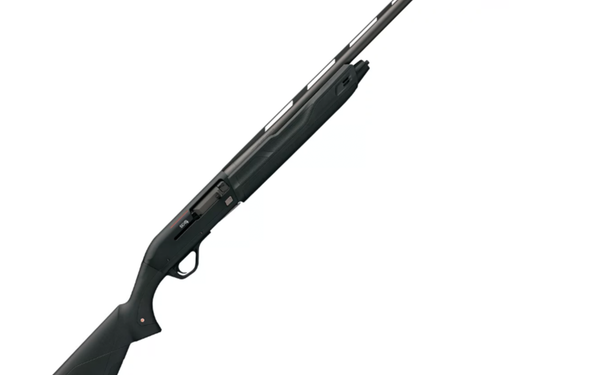Here’s Why a 12-Gauge Is the Best Shotgun for Dove Hunting
Plus, our expert's picks for the 5 best dove guns

We may earn revenue from the products available on this page and participate in affiliate programs. Learn more ›
Several years ago I mentioned to a man from Louisiana that I came from a state where doves were protected songbirds. “Ain’t worth livin’ there,” he said, matter-of-factly. His words gnawed quietly at me, and when my state finally did approve a dove season 11 years ago, I wanted to catch up for the decades of lost time. My attitude dictated my choice of dove hunting shotgun. Those first few seasons, when I absolutely had to shoot every dove the law allowed, I shot 12-gauge semiautos only. I’ve since calmed down and gone to a 28-gauge O/U. That’s part of the fun of dove hunting: Any gun you enjoy shooting can be the best dove gun for you. At the same time, there’s no question that if you define the “best” dove gun as the most efficient and effective dove gun, the 12-gauge semiauto is it—hands down. Here’s why:
Four Reasons Why a 12-Gauge Semiauto Is the Best Dove Gun
1. Ballistics
Loaded with 1 or 1 1/8 ounces of shot, a 12 gauge can take doves from close range out to 40 yards or more, especially if you shoot size 7 1/2 shot. More shot in the pattern means that the usable pattern—the part dense enough to ensure multiple hits on a bird—is wider than it would be with a lighter load from a small-gauge gun. It’s not a huge difference, a few inches at most, but you can see that difference play out in registered Skeet averages, where almost everyone scores higher with a 12 than they do with smaller gauges. Bear in mind that Skeet shooters use one gun and sub-gauge tubes for all four gauges, so the difference have to do purely with their ammunition, not with their guns. A 20 gauge comes close to a 12, but the big-bore wins.
Also, I keep reading that doves aren’t hard to knock down. It’s one of those cliches that writers repeat that makes me wonder if they are paying attention in the field. Maybe we’re not shooting the same doves, because I’ve seen lots of birds lose feathers and keep flying, or fall and magically recover and fly away. The extra pellets in a 12-gauge pattern can make a difference between a clean kill and a crippled dove.
2. Weight
Heavier, bulkier guns don’t feel as good in your hands as a trim smallbore might, but they’re easier to swing and shoot. In dove hunting, your vehicle carries the gun right to the spot (or very close), so there’s no real advantage to a lightweight shotgun. A longer, heavier gun swings more smoothly, points well, and is generally easier to shoot that a lighter gun. Heavy guns can be faster to the target, than lighter smallbores, if speed matters to you. The extra heft absorbs recoil, too.

3. Action
When I shot 12s at doves, it was almost always a semi-auto. I can’t cycle pumps smoothly and quickly enough to make good followups on juking doves, so I wanted a gun that shot every time I pulled the trigger. I prefer gas guns to inertia-operated models because of the recoil reduction of gas, which can matter if you’re shooting a lot and wearing no more padding than a t-shirt. Softer recoil lets you get back on target faster after a miss.
Any repeater beats a break-action in terms of firepower and speed of reloading. It no longer bothers me if my gun is broken open to reload and a dove comes floating in, but it used to drive me nuts. With a magazine gun, you can also quickly drop a shell into the empty port. Once in Argentina, I shot three doves out of huge flock, threw two shells into my semi-auto and shot two more before the bunch swept on out of range. My jaded bird boy actually cheered, and I was pretty impressed with myself. I never could have done that with a pump or break-action, only a semi-auto.
4. Familiarity
If you shoot the same 12-gauge semi auto at waterfowl as you do at doves, you’ll have the advantage of confidence and familiarity with your gun when you take it to the dove field. Moreover, you’ll be getting good practice for duck season. Ignore the small-gauge snobs who mock your 12 as a cannon. You’ll have plenty of time to heckle them back after you come in early with your limit.
Five of the Best Dove Guns
The list of great current-production 12-gauge semiauto dove guns leaves out a classic (the 1100) and a favorite (the V3) because RemArms/Remington is still ramping up production, but we should be seeing them again soon. It also omits the Browning Gold, Beretta 391, and 3901 I used to shoot, as they are no longer made. Per my preference, these are all gas guns. Inertia lovers can choose among the Benelli Ethos Cordoba, the Franchi Affinity, and the Browning A5 among others.
1. Tristar Viper G2
Why It Made the Cut: It works. It’s slim and trim. It comes in three colors. And it doesn’t cost much.
Key Features
- Weight: 6.8 pounds
- Stock: Walnut or synthetic with shims to adjust drop and cast
- Barrel: 3-inch chamber; 26- or 28-inch lengths
Pros
- Low price
- Choice of Cerakote receiver colors
- Light and slim to suit smaller shooters
Cons
- Heavy trigger pull
A bargain-priced gas gun, the Turkish-made Viper G2 is beloved by almost everyone who owns it as a no-nonsense, lightweight shooter that gives reliable service without much recoil. It comes in several finishes, including black-synthetic, camo, and walnut—some of it very nicely figured—with three different receiver colors (bronze, silver, black), and there’s a mirror image left-handed model, too.
Weighing less than 7 pounds, the gun falls into my “too light for doves” category, but the Tristar earns a pass because it is slim and trim and feels almost like a 20 gauge in hand and suits smaller shooters who may still want 12-gauge ballistics on their side. Unlike some similar guns in its price range, the Viper G2 requires no adjustment to shoot light or heavy loads (some other guns come with two gas pistons), so when dove season is over you can load this gun up for pheasants or waterfowl without switching pistons. The Viper G2 does have a fairly heavy trigger pull, and if that bothers you—it never bothers me except in turkey guns—you can buy an aftermarket spring and solve the problem.
2. Browning Maxus II
Why It Made the Cut: The second generation of the Maxus corrects the one flaw in the original to become one of the best-shooting gas guns around.
Key Features
- Weight: 7.25 pounds
- Stock: walnut or synthetic
- Barrel: 3- or 3 ½-inch chamber; 26- or 28-inch lengths
Pros
- Soft comb reduces recoil
- Synthetic stock designed to be cut down; also includes shims and spacers
- Excellent trigger
Cons
- Cost; it’s the most expensive gun in this group
The Browning Maxus II semiauto is one of the best gas guns around. Based on the already successful Maxus, the Maxus II did away with the one annoying feature of the original Maxus, the forend latch, which has been replaced by a standard magazine cap. That is welcome news for anyone to wants add a magazine extension or weights to the front of the gun. Neither matters for dove hunting, but they add versatility to the gun.
The redesigned stock includes a parallel section at the butt that makes it easy to cut it to fit shorter shooters while still allowing the use of the original recoil pad. Spacers and shims included with the gun allow for further fit adjustments. It has an enlarged bolt handle and release button as well as milled-out loading port to make it easier to load and unload in the dove field, and the stock has rubber grip inserts, the better to hold onto with sweaty hands in the heat of September 1.
A new soft comb insert works in concert with the gas system and Inflex recoil pad to make the Maxus II a very soft-kicking gun. I was able to shoot a couple of cases of target loads through the Maxus II last year and I hunted teal with it, too, and the gun ran perfectly for me. It shot flat to the point of aim, and I found it very easy to hit with.
3. Beretta A300 Outlander
Why It Made the Cut: The best deal going in a gas gun, the A300 offers Beretta reliability at a sub-$1,000 price point.
Key Features
- Weight: 7.25 pounds
- Stock: Synthetic or walnut, adjusts for drop, cast and length
- Barrel: 3-inch chamber; 24-, 26-, 28- and 30-inch lengths
Pros
- Based on one of the greatest semiautos ever, the Beretta 391
- Reliable
- Stock comes with length spacer
Cons
- Safety in front of trigger guard may be hard for those with shorter fingers
- Bolt release button hard to push
When Beretta introduced the new A400, it moved production of its predecessor, the 391, to the U.S. and began making it as a budget gun called the A300 Outlander. While its technology may be older, the 391 was regarded by many as the best Beretta semiauto ever. The A300 is practically the same gun with less expensive fit and finish and a gas piston that’s easier to clean. The 391, by the way, is one of the few guns rugged and reliable enough to be kept in South American dove lodges for customers who shoot one or two thousand rounds a day.
While all gas guns reduce recoil somewhat, I never found the 391/A300 platform to be among the softest-kicking of semiautos—although it’s definitely easier on the shoulder than an inertia gun or a fixed breech model. I have found these guns to be among the most reliable, and they will run forever between cleanings while cycling the lightest 12-gauge loads, in some cases down to ¾ ounce reloads. Use some of the money you save over the price of a top-of-the-line semiauto on an enlarged bolt-release button, because the factory button is stiff.
4. Fabarm L4S

Why It Made the Cut
Lightweight but still very easy to shoot well, the L4S can hold its own in the dove field and double as an upland gun.
Key Features
- Weight: 6 pounds, 14 ounces
- Stock: Walnut; adjusts for drop and cast
- Barrel Length: 3-inch chamber; 26- or 28-inch barrel length
Pros
- Light
- Tribore barrel improves patterns and—very slightly—velocity
- Easy to maintain
Cons
- Small safety
- Bulky forend
Fabarm, owned by Caesar Guerini, offers a really good, soft-shooting semi-auto in the L4S. It has beautifully polished internal parts and cycles anything you put in it down to the lightest reloads. Fabarm’s unique Tri-Bore barrel shoots good patterns and has been shown in lab tests to provide tiny increases in velocity.
The L4S boasts a beautifully polished, very soft-recoiling gas system as well as a unique method of disassembly. What looks like the magazine cap only holds the forend in place. A nut inside the gun holds the barrel on tight to the receiver. It does have European styling—a stippling pattern in place of checkering that may make it an acquired taste for some. It comes with five choke tubes, stock shims, and detachable sling swivel studs so you can sling it or leave it without studs that may catch in your clothing.
Weighing in at a few ounces under 7 pounds, the L4S breaks my rule that a dove gun should have some heft. It’s an easy gun to shoot, though, and it seems to swing as well as some heavier guns. It makes this list both because it’s an excellent gun and because I had mine in the field on the afternoon I shot doves better than I ever have before or since.
5. Winchester SX4
Why It Made the Cut: Soft-shooting, versatile, reliable, affordable: what’s not to like about the SX4?
Key Features
- Weight: 7 pounds
- Barrel: 3- or 3 ½-inch chamber; 26- or 28-inch barrel length
- Stock: Synthetic or walnut; adjust for length
Pros
- Enlarged safety and bolt release button make this gun easy to handle in the field
- Easy to clean
- Soft shooting
Cons
- Fit and finish is not as good as SX3
The latest in Winchester’s Super X line, the Super X4 features the same time-tested gas system of the X2 and X3, and adds some enlarged controls, all at a lower price. Its gas operation combines with a very soft Inflex recoil pad to make the X4 easy on your shoulder. The guns come with shims and length spacers so you can tinker with the stock fit, and it has the overbored Browning barrel and long Invector Plus choke tubes to throw patterns too dense for a dove to fly through.
The SX4 is also a very simple gun to maintain. It has three gas system parts: a piston, a buffer tube, and a spring that you have to clean only occasionally. The X4’s lower price does come at the expense of fit, finish and a few more plastic parts, but it remains a durable, reliable workhorse of a gun. I’ve shot the X2, X3 and X4 (the X1 was an entirely different gun) and while I may not like the X4’s cosmetics, there’s no arguing that it’s a shooter. And, there’s an X4 to fit almost anyone. A short-stocked compact model comes in 24 or 26-inch barrel lengths, and there’s a new, mirror-image left-handed version as well.



